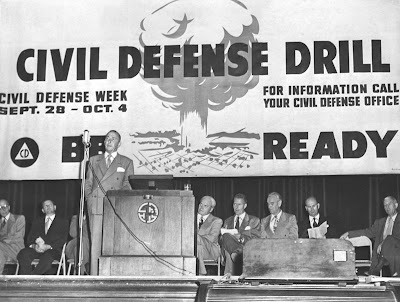NUCLEAR WEAPON EFFECTS from Hiroshima and Nagasaki to the present and beyond: a broad-gauged analysis with new information regarding SIMULTANEOUS DETONATIONS and Firestorms:
THE BLAST
This web page will illustrate the effects of nuclear weapons, whether used singularly or in groups. It employs pictures, eyewitness accounts, and analysis of the physics. It reviews the extent of death and injury within specific ranges and shows the influence of nuclear blast forces and resulting firestorms.
The size of weapons: The one megaton size weapon is no longer widely used. Most of the literature that focuses on one megaton weapons is dated and of limited use for assessing blast damage. It was principally in the late 1950 and 1960s when megaton weapons were in vogue in the U.S. and comprised the bulk of its strategic nuclear weapons. The trend has been to move away from weapons in the megaton range. This trend is not a consequence of nations becoming choir boys. It is because they can produce more effective destruction with weapons in the 100 Kt to 550 Kt range [greater destruction per unit of weight].
The overwhelming majority of nuclear weapons in all nuclear weapon nations are less than one megaton [China comes the closest to being an exception to this rule with roughly 73% of its weapons reportedly being 300 Kt or less, and the remaining 77 of its weapons perhaps being 3.3 megatons or greater].
For comparison, note that the Hiroshima bomb was 12.5 to 15 Kt in size. The Nagasaki bomb was approximately 21 Kt. The U.S. weapons now fall principally within the 100 Kt to 375 Kt range, the average being approximately 250 Kt. And the majority of Russia weapons are 550 Kt; the average size is roughly 400 Kt.
Population: Population density is a key component in the problem. When you go to the following site link, enter the zip code of the area of interest at the left on the first line; then enter the radius at the right on the first line, and click on the button on the first line to the right that states "Find All Zip Codes". By doing so you can get population density.
Enter Your Zip Code to Get Population Density
Population in the area at the time a nuclear blast occurs, of course, varies according to time of day, location, resident population density, and other factors. For the United States you can readily determine resident population densities at different radii for a hypothetical attack by clicking here .
For population densities in other nations, the new downloadable computer program Nukefix on its "War-Room Plans" page provides an extensive analysis indicating the number of weapons required to attack populations sorted according to population density. The program Nukefix makes this information available so that the citizenry can anticipate the factors that their own nation, and adversary nuclear nations, are capable of considering in their war plans.


No comments:
Post a Comment